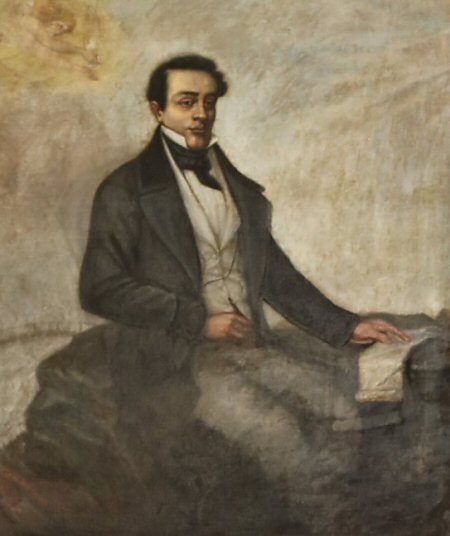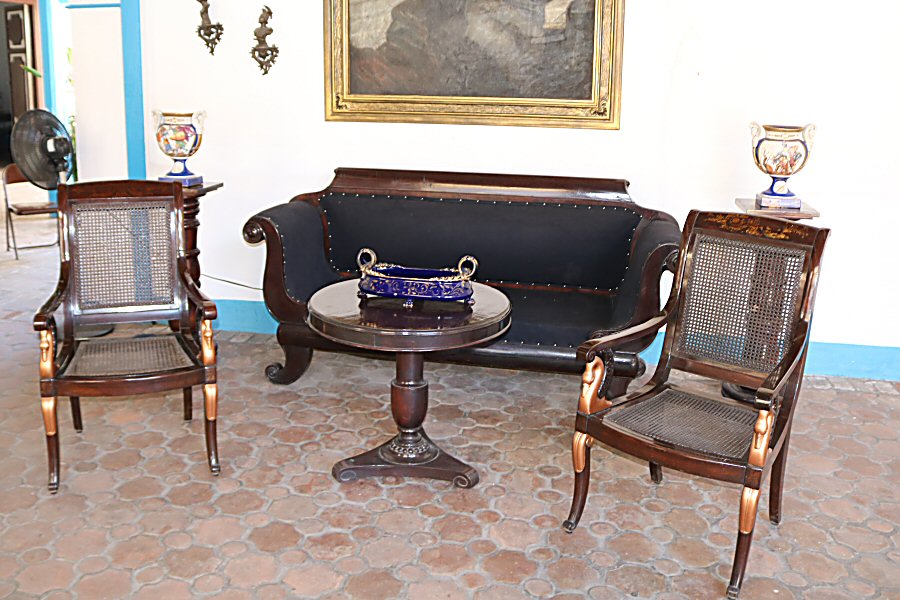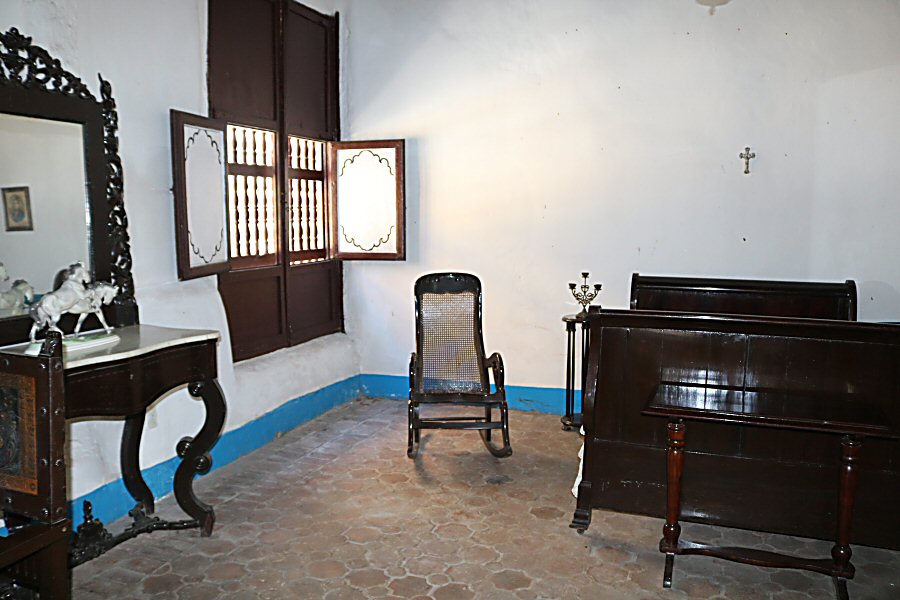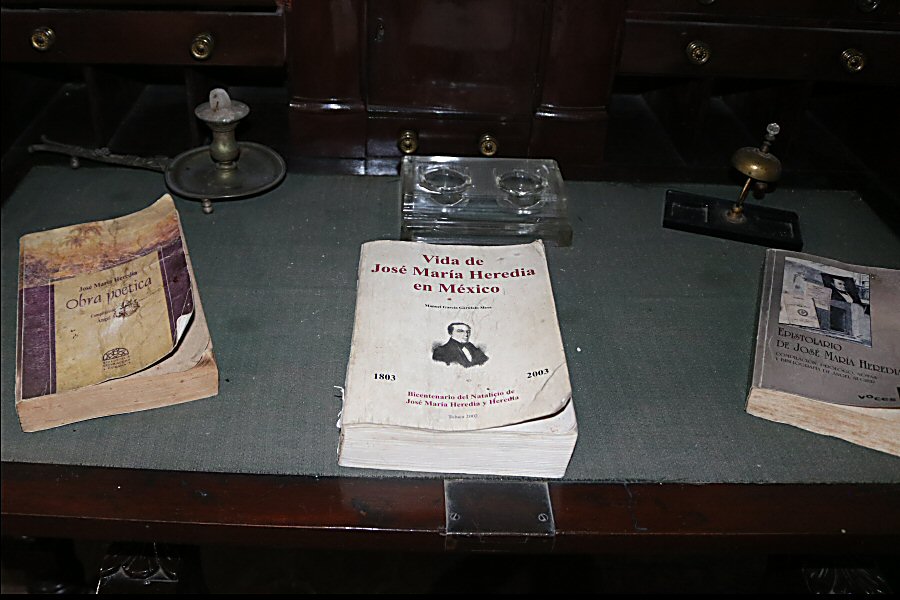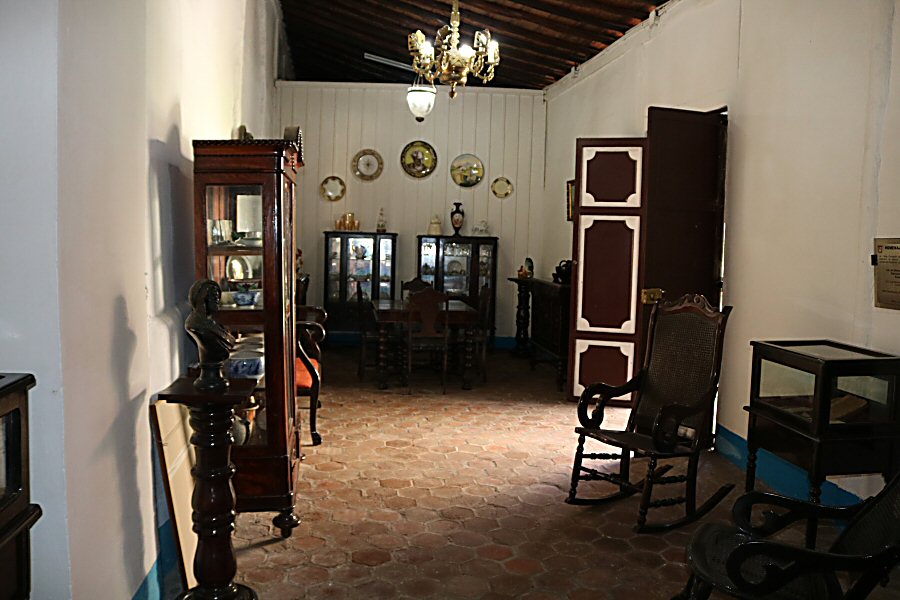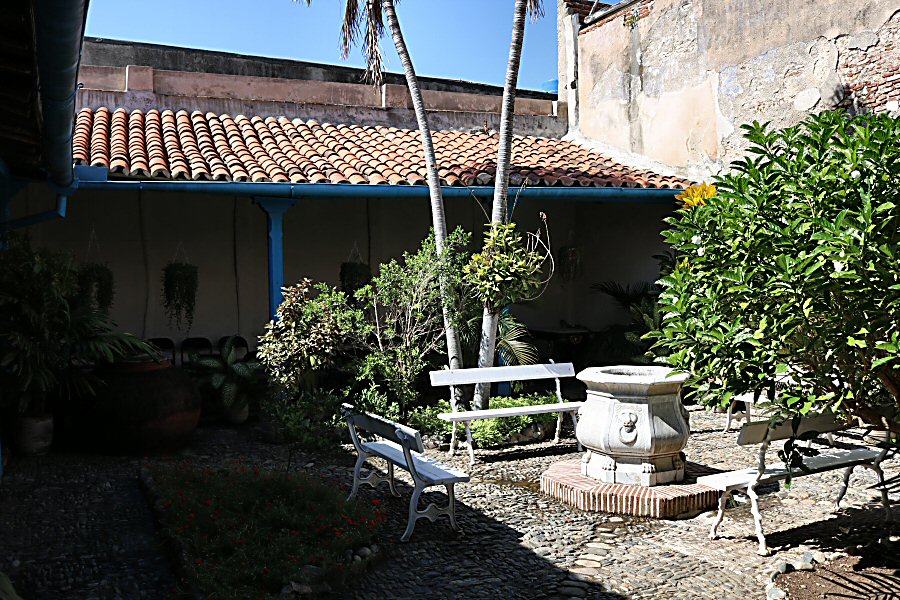Casa Natal de José María Heredia is marked incorrectly on Google map. Actually, it is the house on Heredia street #6, next to the building marked on the map above.
Tuesday - Saturday 09:00-17:00
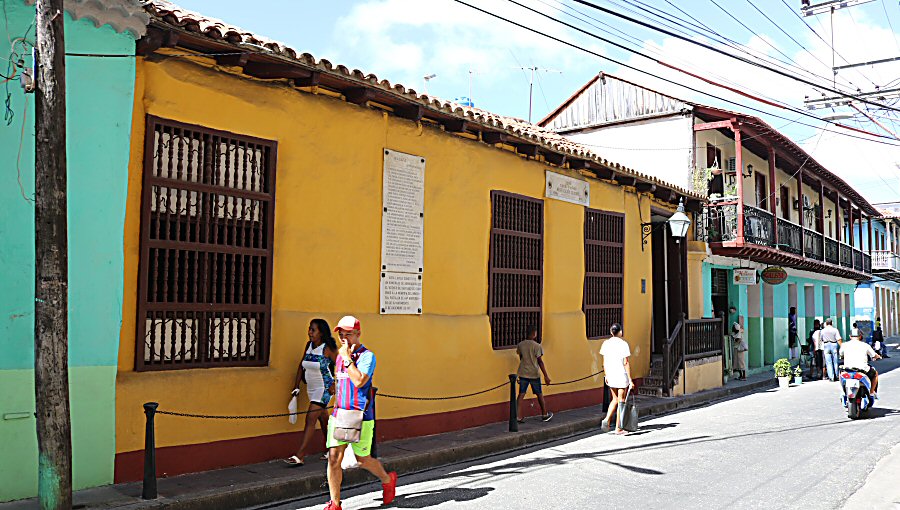
![]()
This colonial house is the birthplace
of José María Heredia y Heredia (1803-1839) that is one of the
greatest Latin American poets. Although he studied law and
carried out an abundant work as a translator of different
literary works, he is known by his romantic poems that were
forbidden in Cuba until the revolution. Submerged in longings
and loneliness, he fell ill with tuberculosis and died in exile
at the age of 35. His famous works are
“Oda al Niágara”, ”En el teocalli de Cholula”, and “El himno del
desterrado”.
Heredia’s family left the house when
he was 3 years old, so that the house served as barracks and
later as hospital for slaves for a while. Then it was abandoned,
and subsequently fell into ruins. At the end of the 19th
century, La Asociación Junta Heredia was established to rescue
the dilapidated house and to convert it to a center where his
ideas would be disseminated. José Martí was one of the
contributors. In 1895, with the endeavor of the poet Efraín
Nadurau, the Ministry of Culture started to grant the José María
Heredia plaque to personalities and institutions that have made
contributions to Cuban culture. In 1889 the house was declared a
National Monument. In the restoration in 1959, the ceramic
floors are renovated, and the original image of the house has
been maintained. In 1997 it became a part of the Conservatory.
The mildly interesting museum exhibits documents (various first editions of his work), paintings, family photos and other relics that are enriched by recent donations of Heredia's great-great-grandchildren, living in Santiago de Cuba.
On Tuesday and Thursday local poets
meet for discussions and recitals on the patio at the back of
the house.
